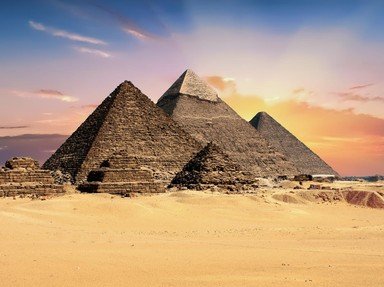Quiz Answer Key and Fun Facts
1. Which one of these goddesses helped to guard the shrine that held King Tut's canopic jars?
2. How many bracelets were found on Tut's arms under the mummy wrapping?
3. There is evidence in Tut's tomb which suggests that Tut had an oddly-shaped head.
4. What scene is depicted on the back of King Tut's Golden Throne?
5. King Tut's canopic jars were made for him during the seventy day mummification period after his death.
6. Which animal was depicted on the gold collar that covered Tut's chest?
7. How many coffins encased Tut's body?
8. Four headrests were found in Tut's tomb, along with a smaller model that was found under the mummy's neck. The model was made of what precious metal?
9. Tut's tomb was probably robbed shortly after his burial.
10. How many items were found in King Tut's tomb?
Source: Author
ponycargirl
This quiz was reviewed by FunTrivia editor
bloomsby before going online.
Any errors found in FunTrivia content are routinely corrected through our feedback system.

